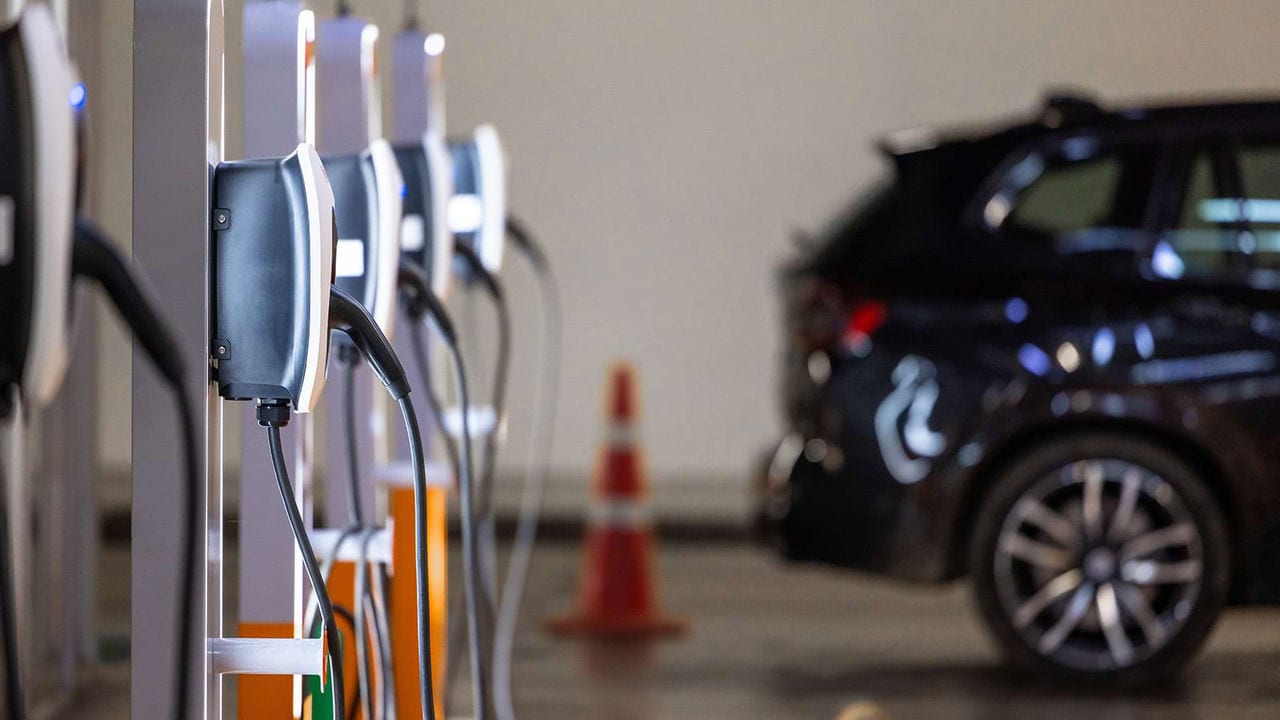Analysis of 2018 company results
Many experts believe that 2018 was the year the current boom reached its peak. The results of the surveyed businesses also support this opinion. More than three-fifths of the respondents reported revenue growth and more than 40% even saw double-digit growth. Slightly less than one-eighth of the survey participants reported a revenue decrease. The performance of the surveyed businesses confirms that last year was probably the year in which the development of the automotive industry culminated. The performance is also in line with the year-to-date results for the sector, which were higher by more than 20% compared to the previous year.
What was your Y2Y change in revenue compared to the previous year?

The effects of the ongoing production growth in the automotive industry mainly affected suppliers as regards demand – three-fifths of the surveyed businesses stated the volume of products sold as the main factor for revenue growth. Generational exchange of products, especially in the car manufacturing plants, also affected growth in production – over 40% of the respondents also felt that this had an impact on their performance. Changes in sales prices only affected revenues of 10% of businesses, with other factors only having a rather marginal effect. One firm scaled back production at its Slovak plant, and one company transferred production to Slovakia from a plant in China.
What were the main factors for the 2018 revenues change?

The 2018 economic boom in the industry also impacted production capacity utilization. 60% of the respondents reported utilization of production capacity in Slovakia of more than 80%. As a general assumption, this level of production capacity utilization is required to generate profits in the industry. Most firms (almost two-fifths) utilized 80–90% of their capacity, and almost one-sixth more than 90%. Slightly less than one-third of the surveyed businesses utilized their production capacity between 60% and 80%, and a few companies used less than 60% of capacity. This is indicative of some Slovak suppliers not having been successful in winning contracts for new models at Slovak car plants.
What is your current production capacity utilisation?

Supplier`s plans for the future
Although some businesses expect considerable revenue growth in 2019, it is clear that optimism is vanishing if we look at medium-term expectations. More than 20% of firms expect double-digit revenue growth in 2019, but this percentage was almost twice as high in previous years. The total number of businesses with growth expectations also dropped significantly. Almost one-third of the surveyed firms have cautious expectations and do not expect changes in their performance. Almost a quarter of companies expect a sales decline and have significantly less positive expectations compared with predictions in previous years. The disruptive trends within global economies appear to have an immediate impact on the automotive outlook.
What revenue change do you expect in 2019?

HR related topics significantly affect future growth prospects. The most significant risk factor stated in the responses is the increase of labour costs. Two-thirds of the survey participants identified it as an obstacle to further growth. Almost the same percentage of firms consider lack of qualified staff as a risk factor. The second group of important factors refers to the demand of carmakers. Two-thirds of automotive suppliers consider the volume of orders as a risk factor for their future growth. A slightly lower percentage of firms is concerned about the impact of continuous pressure on price decreases from car manufacturers. Almost one-fifth of firms consider tighter EU regulation of the automotive sector to be a risk, and a similar percentage of businesses feel uncertain about Brexit. So far, automotive suppliers in Slovakia are not concerned about the impacts of electric car production, at least in the medium term, although this trend is achieving more and more support throughout the EU. Considering the multinational trends and specifically the strategic visions of the European OEMs, it appears more attention should be given to anticipating needs resulting from the effects of the transformation of the automotive industry.
Which of the following risk factors may affect your future growth prospects?

Businesses were more restrained when making estimates on development in staff numbers. Almost half of the companies stated their staff numbers would remain unchanged, which indicates lower pressure on recruiting new staff. After a start-up phase in the production of new models in car plants, the emphasis is now on making production more efficient, and suppliers will be affected by this. Though, with the start of production, demand may still grow for supplies of some models. However, slightly more businesses expect staff reductions than staff increases. The expected end of the growth phase is likely to see the start of programmes focused on improving operational efficiency.
What headcount changes do you expect in 2019?

Although many companies expect that new drive systems, most importantly e-mobility, will change automotive industry products, this is currently not a focus of attention, which is reflected in the e-car production landscape in Slovakia to date. One-third of the respondents do not currently manufacture electric car components, and some firms do not intend to do so in the future. A similar percentage of firms supply up to 5% of their production for electric cars. One-sixth of respondents deliver 5% to 10% of their production for electric cars, and only a single company reported a figure of more than 10%.
Despite recommendations from previous years that the supplier sector may benefit from preparations for the development of e-mobility by confirming its position in production and gaining influence over the development of new driving systems, the Slovak car industry is lagging behind. Alongside Germany where the start-up production of electric cars is changing car factories and the supplier network, V4 countries are also preparing themselves for the new mobility era.
But the fact that our firms are not involved in this trend is also due to their low innovation capability as regards product innovations, which are necessary for the development of new products for e-mobility.
What percentage of your portfolio is supply for e-mobility (hybrids, electrics)?

Globalization, changes in purchasing strategies, business environment, and the fight for new orders within groups are changing production expectations at supplier plants in Slovakia. Although most respondents do not expect any changes, a number of them do. Some expect that new production will be moved to Slovakia, or that part of their existing production will be transferred to other plants. The critical signal for our economy is that among companies that expect a one-way shift of production, compared to previous years, many are considering shifting production to other countries. About 10% of businesses in the survey are considering such a move.
Is the shareholder/group planning to transfer production in the next 12 months, and if so why?

According to survey participants, the three most important reasons for transferring production out of Slovakia include lower manufacturing costs in other countries, a shortage of skilled staff, and drawbacks regarding the business environment and legislation in Slovakia. Investment and R&D incentives in other countries were also cited.
What are the reasons for potential production transfer out of Slovakia:

Competition in the automotive supplier sector, the emergence of new technologies and new companies (market entries) are making competition in the sector tougher. The vast majority of firms consider activities to make operations more effective in Slovakia as of key importance, mainly by increasing labour productivity. Almost half of the companies that commented on their future operation in the local automotive industry, plan major investments in new technologies and digitization to reduce costs and improve labour productivity. About one-third of the respondents plan to achieve similar goals using current technology.
If you intend to continue operating in Slovakia, how would you describe your major focus for the next 3-5 years?

Human resources challenges
Although skilled labour is a topical issue in the industry, as regards the impact of shortages of skilled workers on winning new orders, other factors seem to play a more significant role. For about 30% of the respondents that commented on this question, skilled labour shortages are a limiting factor for winning new projects. Other factors are crucial for 70% of respondents.
Are labour shortages restricting your ability to accept new projects?

Businesses also have a relatively clear idea of changes in legislation and the business environment that could help them recruit more staff. Currently, it is important for many companies to facilitate the process of recruiting staff from other countries, but this is not the area where most would welcome a change. Almost 60% of the respondents require less interference in legislation that directly influences their remuneration systems. Many would appreciate the introduction of incentives for employing new graduates, or the creation of possibilities for students to pass the mandatory practical training in a production plant. For some respondents, an increase of incentives for people willing to relocate for work would be helpful.
What could government do to help your company achieve appropriate staffing levels?

Importance of innovations
The quality of university and higher education also affects the readiness of businesses to develop and innovate their products in Slovakia. More than half of the companies that commented on this question state that R&D activities are managed at the group level outside Slovakia. Less than 8% of them are considering undertaking R&D in Slovakia, or participating in group development activities. Of the two-fifths of the respondents that state they have R&D activities in Slovakia, the majority states that their R&D departments only provide services to group companies. Only slightly more than one-third of firms with an R&D department also provide R&D services to external customers.
The promotion of the firms’ innovation performance is dependent on their export performance, so more attention should be paid to this issue.
Do you have R&D activities in Slovakia?




Automotive supplier survey 2019
Contact us

Jens Hörning
Partner, CEE Industrial Services & Automotive Leader, PwC Slovakia
Tel: +421 903 451 242

Partner, Assurance, Audit of shared service centers, PwC Slovakia
Tel: +421 903 447 754









